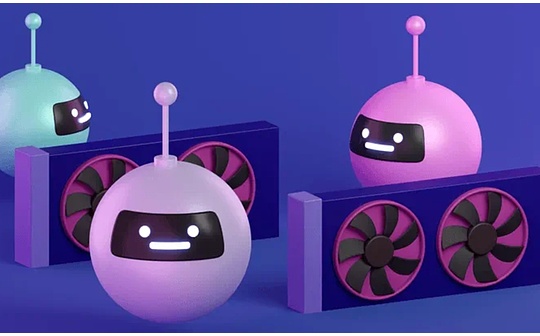
By Scott Duke Kominers and Steve Kaczynski
source:a16z
Translation: Shan Oppa, Bitchain Vision
Our new bookTokens for Everything: How NFT and Web3 will change the way we buy, sell and createOne of the goals of 》 is to release the power of irreplaceable tokens (NFTs) to business.Domestic and international brands already use NFT in some consumer-facing activities, but we think more brands can benefit from this technology.We don’t want local businesses to fall behind; NFTs also provide them with opportunities to attract fans and communities.
To do this, we have laid out a blueprint for builders, from start-up team members to small business managers to big brand executives.We describe a successful five-step framework:NFT ladder.
-
Ownership – This isweb3’s bet, but it’s fundamental.NFTs use blockchain to create digital assets whose ownership can be defined and verified independently of any platform or intermediary.This helps create markets of merchandise where ownership is difficult or impossible to define, including digital images now ubiquitous, as well as game items, event tickets, and even health data.This means that NFTs can exist longer than their creators and provide people with a certain level of personal control, as they are used to with physical assets: a wallet that owns an NFT can determine which platforms can access it and how it can be usedit.For example, if you want to transfer your NFT art collection from one platform to another, all you have to do is disconnect your digital wallet from the first platform and connect it to the new platform.This gives people a greater degree of psychological ownership of their digital assets.It launches a powerful incentive cycle: When you are the owner of a digital asset, you are motivated to help build relevant brands.
-
Practicality—Adding features other than ownership in NFTs can drive further value.Many tokens have default features such as displaying images, providing access to events, or enhancing online gameplay.But this is just the beginning: Since NFTs are embedded in the software, new features can be added over time.Online gaming NFTs may also grant access to the Discord server hosting game discussions, or unlock subscriptions to fan publications.Practicality reinforces the importance of NFT and encourages repeated interactions with the asset, which in turn can inspire brand attachment.Crucially, through NFTs on public blockchains, third parties can introduce practicality as easily as original creators.Combined with the interoperability of tokens across platforms, this means that a wide variety of contributors can inject ongoing value into NFTs in a wide range of online and even offline environments.One can use digital avatars on multiple meta-universe platforms at the same time without these services directly interacting with creators or with each other – just like one can wear a piece of clothing anywhere without brand approval.Restaurants can airdrop coupons for local sports competitions to “NFTickets” holders.The studio launches a new “Morlocks vs. Mages” role-playing game that targets people who already hold the Wizard NFT.More broadly, NFT projects can be initiated by leveraging a network of people who can identify various interests on the chain.(Author’s Note: We don’t knowThe Morlocks vs. Mages game actually exists, but if it does, then at least Scott will definitely play it!)
-
identity–The combination of ownership and ongoing utility prompts holders to gain a sense of personal value from their NFTs and ultimately form a sense of identity around them.Interoperability plays a big role here: One can easily present a given NFT (or more accurately, its relevant metadata or media) on different platforms as part of their public identity.Instead, as more people start to connect digital identities with digital wallets, it is particularly important for brands to issue NFTs to anchor their relationships in people’s online experiences.Specifically, identity is an important reason for the rise of PFP (” picture for or p heaven ” or “profile picture ” ) NFT.These tokens are designed to allow people to express their imaginative identities and connect with others with similar self-images and desires.(It will be detailed in the next step.) But identity can apply to any NFT category.Think of your favorite POAP (“Attendance Proof Agreement”) NFT to honor an event, the digital “I Vote” sticker, or even the NFT attached to the slideshow you are particularly proud of.Over time, we expect to see many NFTs establishing personal ownership and identity around personal data such as education and health records.
-
Community-NFTHaving “network superpowers”: Each token implicitly connects holders to form a network of people with common interests and experiences.This is like the type of network effect we are used to in web2, except that the value here isassetsInsteadplatformGenerated.NFT enables people to find their own tribes and then provide the basis for their collaboration.The more prominent NFTs are in different environments, the stronger the relevant networks will become.Additionally, NFT allows holders to have two-way conversations with the brand.Some NFTs grant governance rights, just as in the context of DAO or decentralized autonomous organizations.But even without granting these rights, NFTs can still anchor the community of brand supporters and give them ownership of brand equity.We describe the fan base in the NFT context as having a “semi-permeable membrane”: ideas and experiments can penetrate from NFT holders, while brands themselves can integrate the most successful ideas and experiments.
-
evolution–All of this combines to form a strong digital brand building package.Through NFT, creators, companies, or careers can build a community whose members personally identify with the brand and are motivated and authorized to contribute to it.Connecting these people to each other and to the brand can lead them to grow in unexpected, exciting ways.
The summary here only touches the surface.As a result, as projects climb the NFT ladder, they have the potential to upgrade average consumer interactions to a multifaceted community experience.Therefore, we expect NFTs to become ubiquitous in both online and offline applications.
As we explain at the end of Chapter 1:
NFT can convert images into event tickets and event tickets into brand anchors.They will launch the next generation customer loyalty program to create structures that benefit businesses and consumers in new ways.They will change the way we manage our work history and health data.They can transform simply owning products into a tight community experience.
NFT is all tokens.








